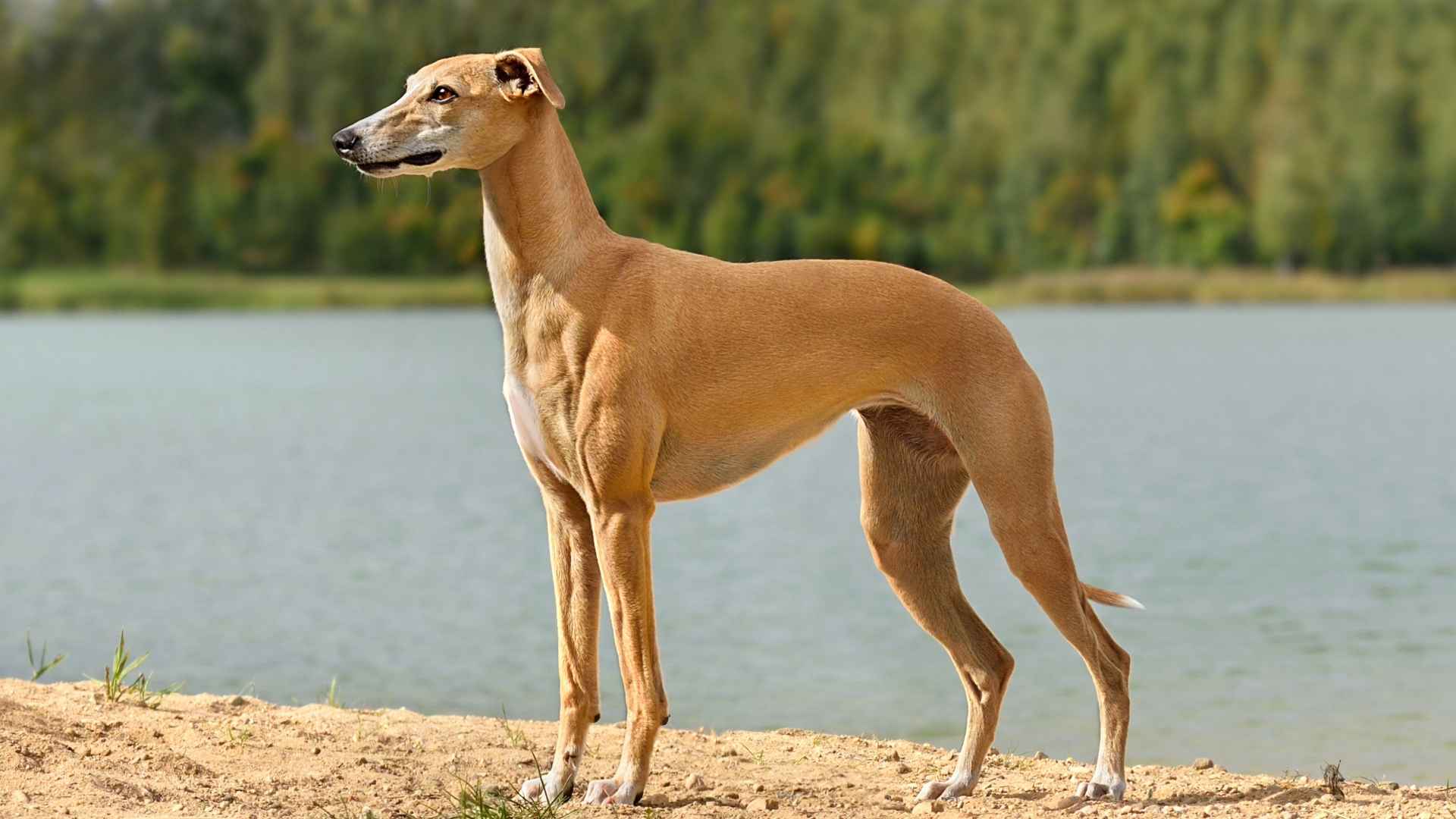Living in a desert climate comes with its own set of challenges, scorching temperatures, dry air, and little shade. While humans can seek shelter indoors, dogs rely on their owners to keep them safe and comfortable. Choosing the right breed is essential if you’re living in such an environment. Not all dogs are built to handle the heat, and bringing home the wrong breed could leave your furry friend struggling to cope.
Some dog breeds are simply better adapted to hot weather than others. Factors like coat type, body structure, and energy level play a major role in how well a dog handles high temperatures. Breeds with short coats, lean builds, and calm temperaments are typically more comfortable in arid, sun-drenched climates. In contrast, dogs with thick fur, respiratory issues, or high energy may be more prone to overheating and require extra care.
Before choosing a canine companion for desert life, it’s important to understand the risks that hot climates pose. Prolonged exposure to extreme heat can lead to heatstroke, dehydration, and even death in dogs. This article explores the top dog breeds best suited for desert conditions, helping you make a safer, smarter choice for life under the sun.
Best Dog Breeds for Desert Climates
1. Greyhound
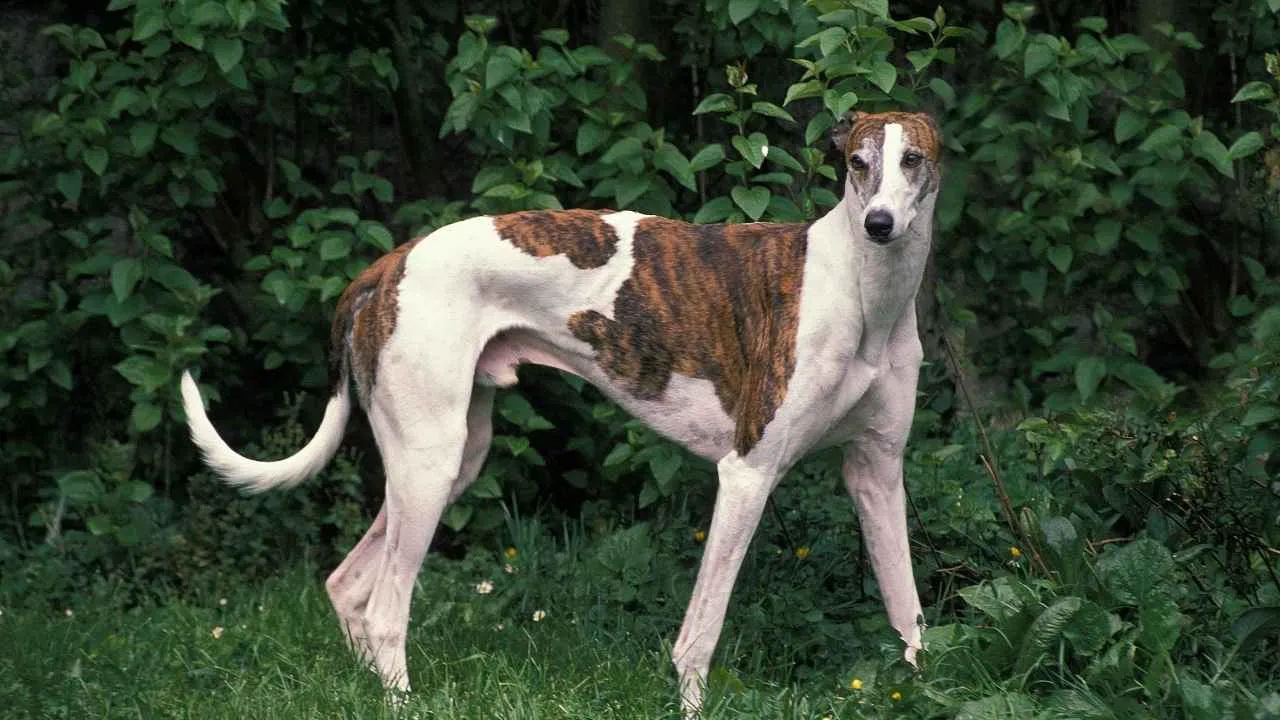
When it comes to thriving in arid conditions, the Greyhound is a natural fit. Originating from the desert regions of Egypt over 5,000 years ago, this ancient breed was developed for chasing game across vast, open landscapes. Their lean build and low body fat help them stay cool in extreme heat, making them exceptionally well-suited for desert climates.
According to the AKC, the Greyhound, known as the fastest dog breed, is an independent yet gentle, noble, and kind-natured companion. Greyhounds are surprisingly low-energy when not sprinting and are known for their calm, laid-back temperament.
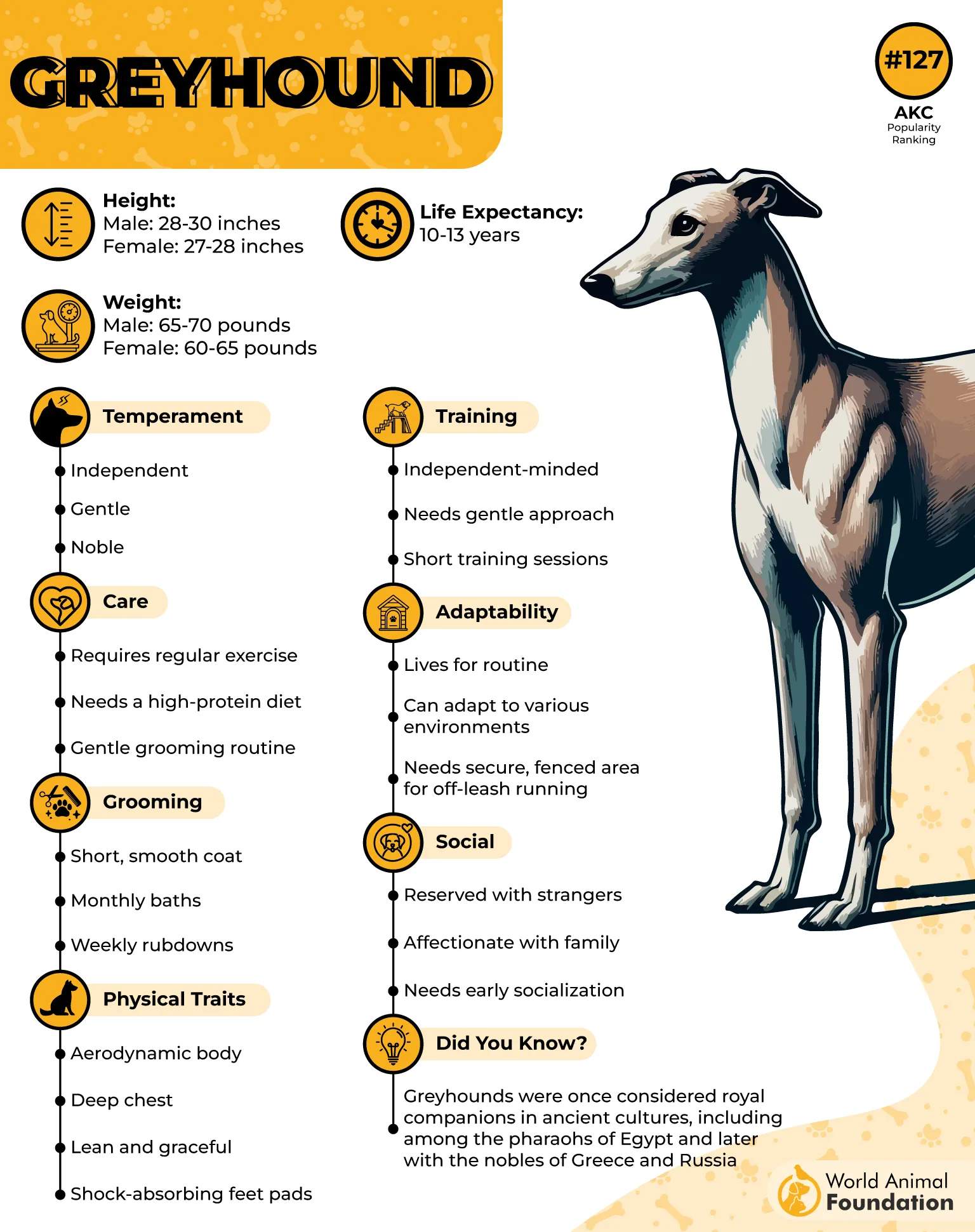
Grooming
Greyhounds have a short, smooth coat that provides just enough protection from the sun while allowing efficient heat dissipation, ideal for hot environments. Their grooming routine is minimal, requiring occasional baths and weekly rubdowns with a damp cloth or hound glove to remove dirt and loose hair.
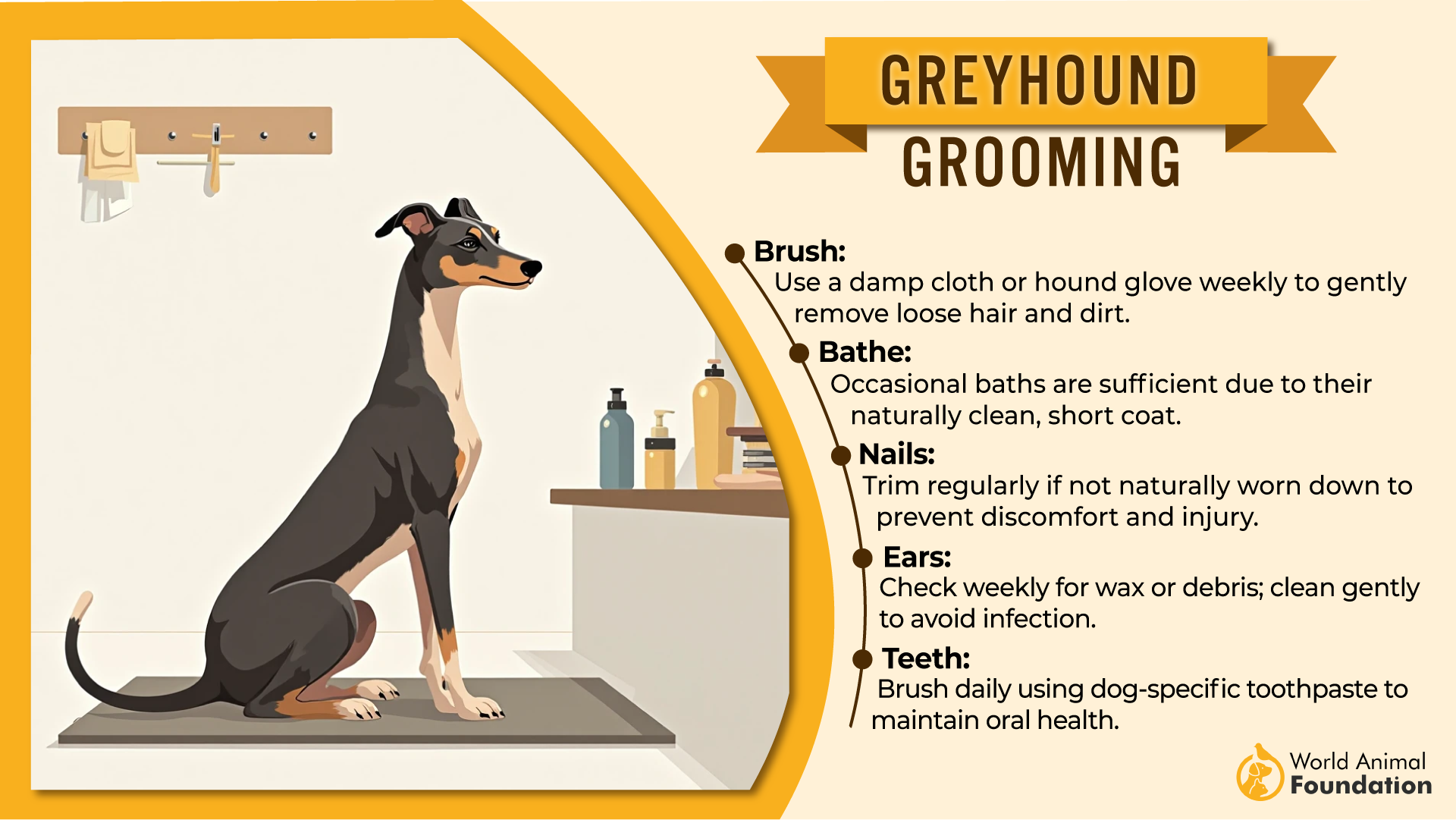
Regular nail trims and dental care are also essential. Their sleek coat makes it easier to spot any debris or skin issues that might arise in sandy, dusty areas.
Fun Fact: Greyhounds, with their Egyptian heritage and sprinting ability, are one of the oldest dog breeds in history, bred to hunt under the blazing desert sun.
2. Australian Cattle Dog
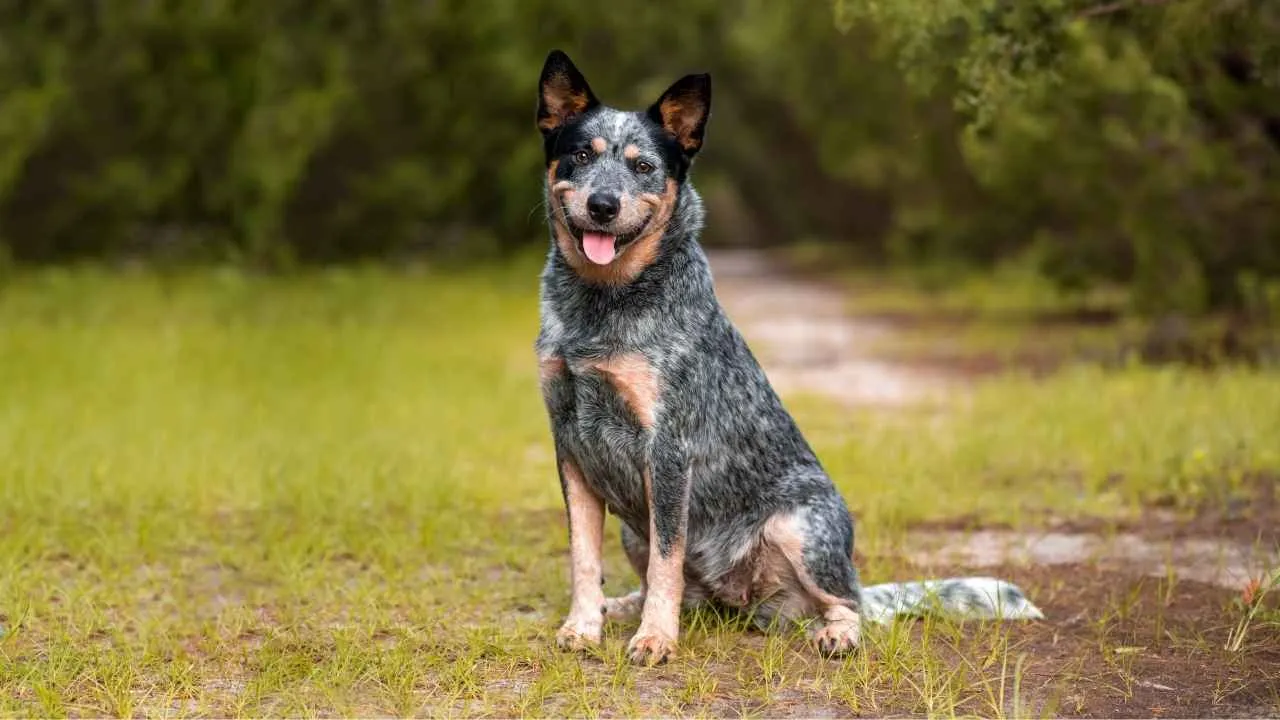
Bred for endurance and toughness, the Australian Cattle Dog is a natural fit for desert climates. With roots in the scorching Australian outback and ancestry linked to the wild Dingo, this breed was built to work in hot, rugged environments.
Highly intelligent and driven, these medium-sized dogs are relentless herders known for their energy, determination, and strong work ethic. Their compact build, standing 17 to 20 inches tall and weighing between 35 to 50 pounds, makes them agile and resilient in harsh terrain.

Grooming
Australian Cattle Dogs are equipped with a short double coat: a dense undercoat and a weather-resistant outer layer that protects them from sun, heat, and debris. This coat requires moderate upkeep, regular brushing helps manage shedding, which increases during seasonal coat blowouts.
Occasional baths are sufficient unless they get into dirt or mud. Routine ear cleaning, nail trims, and eye checks are essential, especially for working dogs in dry, dusty environments.
Fun Fact: The world’s oldest recorded dog was an Australian Cattle Dog named Bluey, who lived an astounding 29 years, a testament to the breed’s hardiness.
3. Basenji
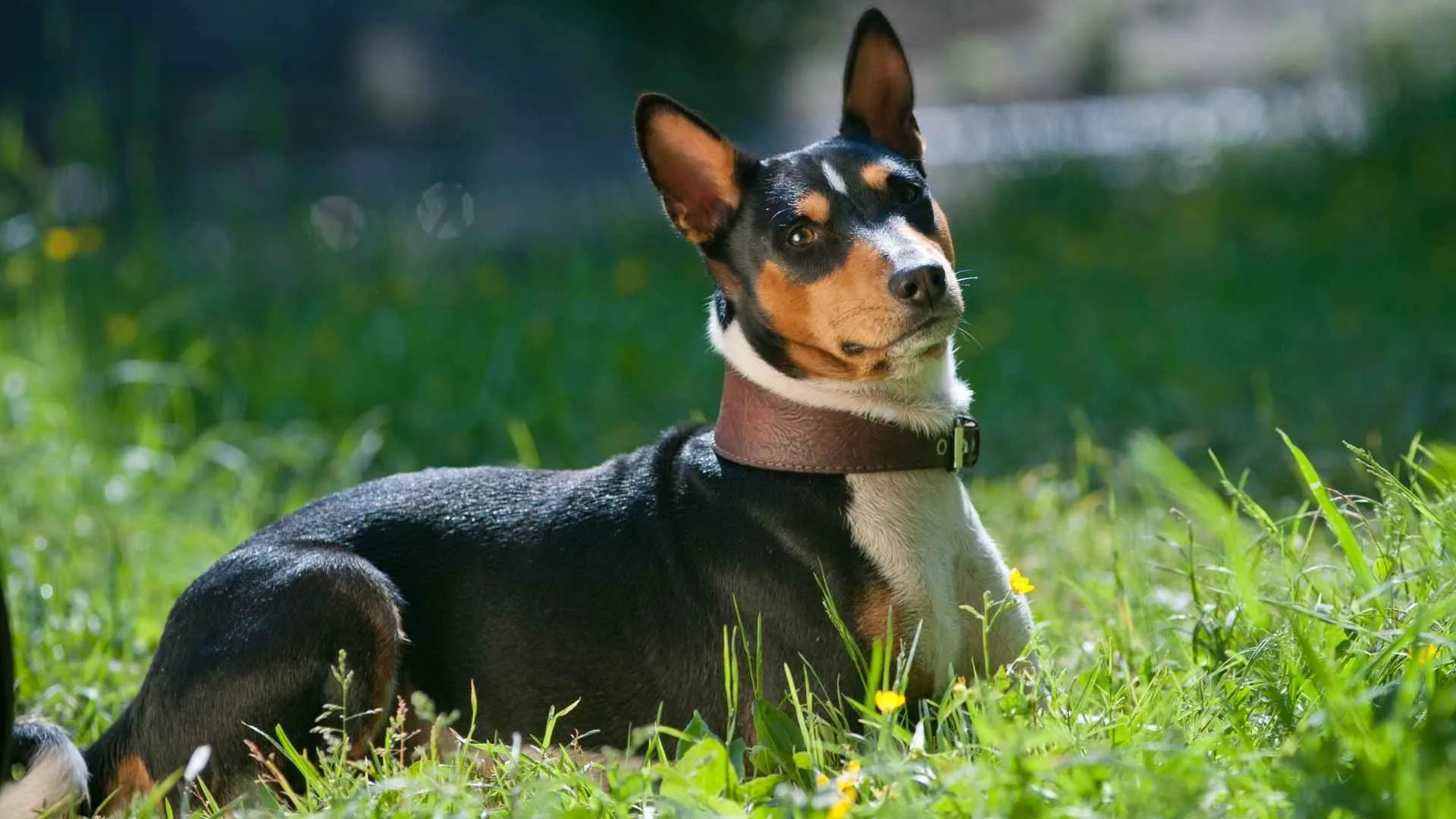
It hails from central Africa. This ancient breed was developed in hot, arid regions where agility, endurance, and heat tolerance were essential for survival. With their compact build, upright posture, and low body fat, Basenjis thrive in warmer temperatures and can handle the physical demands of dry environments.
Unlike many vocal breeds, the Basenji is famously barkless, producing a unique yodel-like sound instead. WebMD describes the Basenji as a smart and self-reliant dog. They make loyal companions for experienced dog owners.
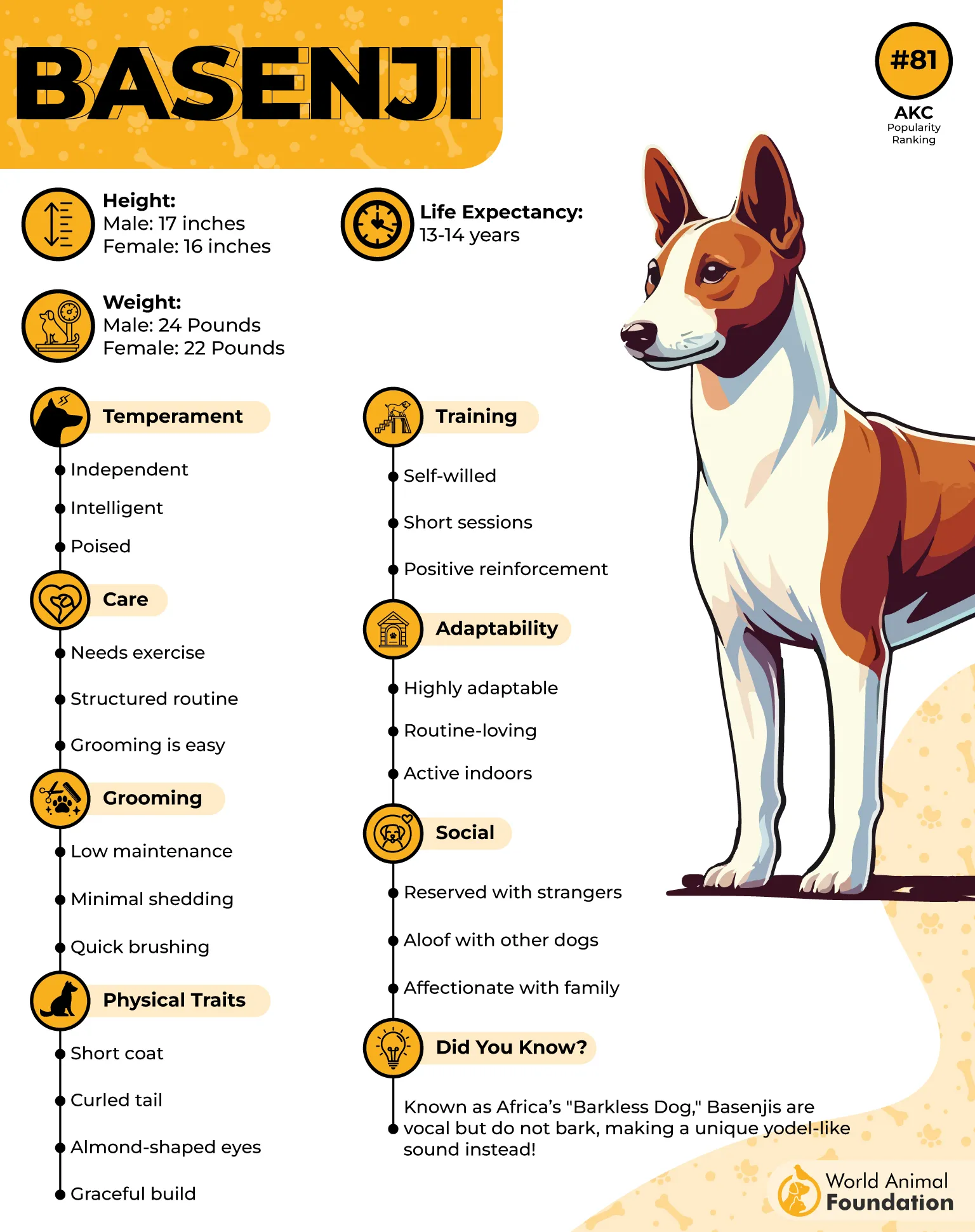
Grooming
Basenjis sport a sleek, short coat that requires minimal upkeep and is ideal for hot climates. Their self-cleaning habits are similar to cats; they frequently groom themselves, which reduces odors and minimizes the need for baths.
A weekly rubdown with a grooming glove keeps their coat in top condition. Their thin coat not only reflects heat but also dries quickly, making them especially well-suited for desert living. Regular nail trimming, ear cleaning, and dental care round out their low-maintenance grooming needs.
Fun Fact: Basenjis are one of the oldest recognized breeds and are affectionately known as the “African barkless dog” due to their unique vocalizations.
4. Chihuahua
Perfectly adapted to hot, dry environments, the Chihuahua is one of the best-suited dog breeds for desert climates. Originating in Mexico, this tiny yet spirited breed thrives in warmth and tends to dislike cold weather, especially the short-coated variety.
Despite their petite size, standing only 5 to 8 inches tall and weighing just a few pounds, Petplan describes the Chihuahua as a spirited companion that flourishes with affection and care. Chihuahuas possess larger-than-life personalities and can be quite assertive. Their alert nature and deep loyalty make them excellent companions, particularly for individuals or families with older children.
Grooming
Chihuahuas come in both short- and long-haired varieties, and both types require weekly brushing to keep their coats healthy and free of debris. The short coat makes it easier for them to tolerate the heat, as it allows for better airflow and less insulation.
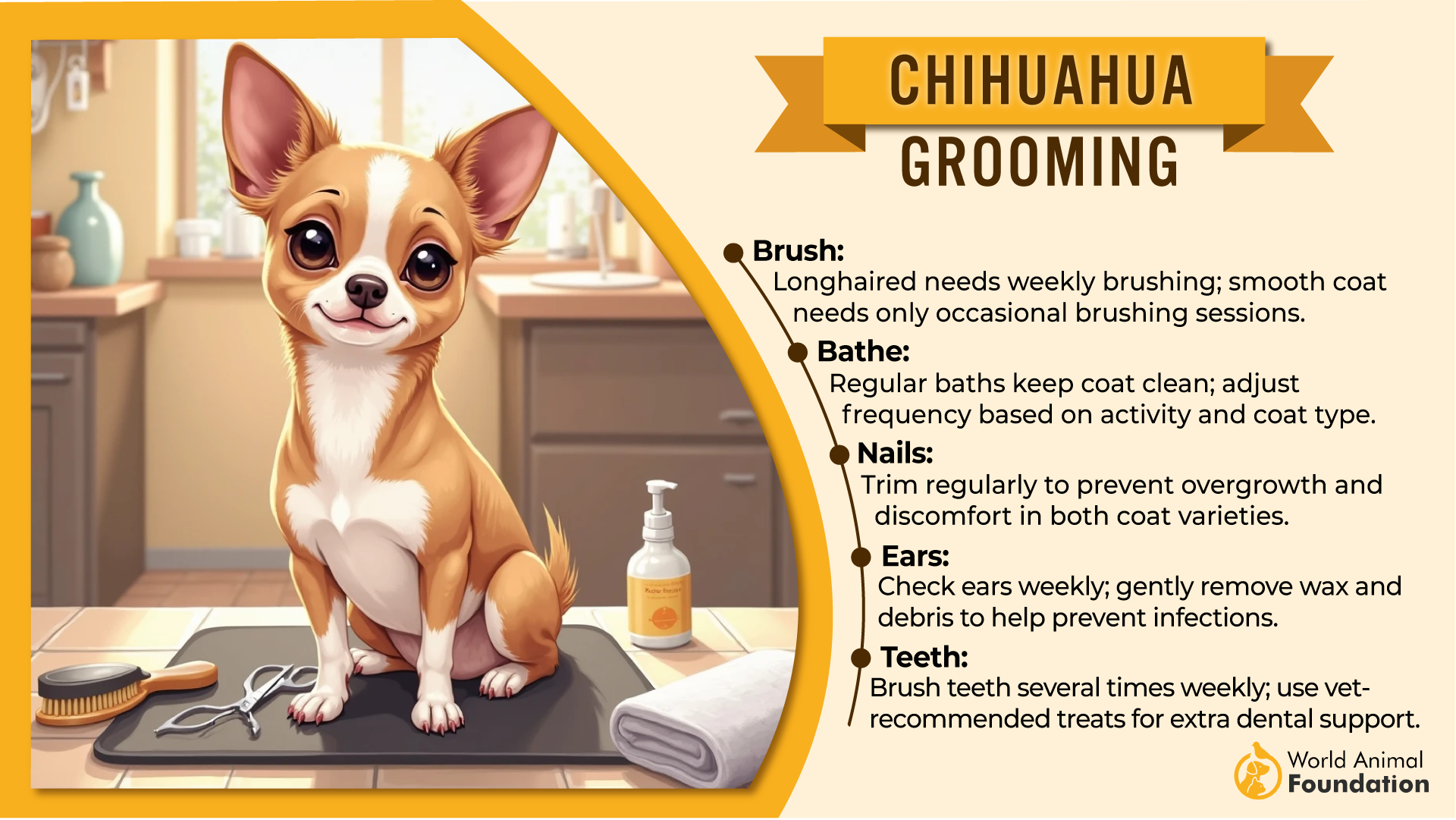
Bathing once a month is typically sufficient, unless they get unusually dirty. During grooming, it’s important to check for parasites, skin irritation, or eye and ear issues, especially in hot, dusty conditions where infections can develop quickly.
Fun Fact: With roots tracing back to pre-Columbian civilizations, the Chihuahua is considered a national symbol of Mexico and has long been adapted to desert life.
5. Dalmatian
Although the breed originated in Central Europe, its lightweight frame and lack of an insulating undercoat help it adapt well to desert climates. Historically used to run alongside carriages as both a guard and companion, Dalmatians are high-endurance dogs that thrive on vigorous daily exercise.
According to Britannica, the Dalmatian is an energetic and playful companion suited for active individuals of any age, though its lively nature might be overwhelming for very young kids and older adults.
Grooming
The Dalmatian’s sleek, short coat requires minimal maintenance, just weekly brushing and occasional baths to stay clean and comfortable. However, due to their lack of undercoat, areas of exposed skin such as the ears, nose, and groin can be vulnerable to sunburn.
In hot climates, it’s important to limit their sun exposure during peak hours and consider pet-safe sunscreen for extra protection. Their coat’s breathability supports heat dissipation, helping them remain comfortable during desert adventures.
Fun Fact: Dalmatian puppies are born pure white, with their iconic black or liver-colored spots appearing only a few weeks later.
6. Chinese Crested
This Toy Group breed, originally developed in China and thought to descend from larger African hairless dogs, thrives in hot weather, especially the Hairless variety. Lightweight and leggy, the Chinese Crested may appear delicate, but it’s an active, agile, and affectionate companion that enjoys staying close to its people.
Their eager-to-please attitude makes them ideal for families who want a heat-tolerant, low-shedding pet. Purina states that the Chinese Crested is cheerful and playful by nature, deeply enjoys being around people, and excels as a companion dog, especially when curled up on a beloved owner’s lap.
Grooming
The Hairless variety of the Chinese Crested requires specific skincare rather than traditional grooming. Its exposed skin must be moisturized to prevent dryness and protected with dog-safe sunscreen during sun exposure to avoid burns. The tufts of hair on the head, tail, and feet should be kept clean and brushed.
The Powderpuff variety, with its fine double coat, needs brushing once or twice a week to prevent matting and may be slightly less heat-tolerant. Regular dental care is essential, especially for the Hairless type, which is prone to missing teeth due to its genetic makeup.
Fun Fact: The hairless gene in Chinese Cresteds is often linked with poor dentition, meaning missing teeth are common in the Hairless type.
7. Saluki
Bred for speed and endurance across scorching sands, this ancient sighthound excels in hot, dry environments. Salukis are renowned for their grace, agility, and reserved nature. Though affectionate with their families, they tend to be independent and benefit most from experienced, patient handlers. Their slim build and efficient gait make them capable of covering long distances with ease, a trait once prized by desert nomads for hunting game.
Grooming
Salukis come in two coat types: smooth and feathered. Both are well-suited to desert living, providing enough coverage without retaining excess heat. Grooming is simple; weekly brushing keeps the coat tidy, though feathered varieties may need a bit more attention around the ears and tail.
Some owners use a snood to keep ear feathering clean during meals. Their low-maintenance coat also makes it easier to check for burrs or sand debris after outdoor activity.
Fun Fact: With a history stretching back thousands of years, the Saluki is one of the oldest known dog breeds, prized for its hunting ability and endurance in the harsh desert heat.
8. Ibizan Hound
Originating from Spain’s Balearic Islands, this elegant sighthound was bred for hunting small game like rabbits across sun-drenched terrain. Its large, upright ears not only give it a distinctive look but also help with heat dissipation, an evolutionary advantage for enduring warm climates.
Agile and graceful, the Ibizan Hound has a high prey drive and needs ample daily exercise, but its calm demeanor and trainability make it a wonderful companion for active families.
Grooming
Ibizan Hounds come in two coat types: smooth and wire-haired, both of which are well-suited for desert life. Their coats are light in color and lack a dense undercoat, allowing for efficient cooling. Grooming is refreshingly simple; a weekly brushing keeps the coat clean and healthy.
Light grooming needs combined with minimal shedding make them an easy-maintenance choice for hot-weather households.
Fun Fact: Though developed on the island of Ibiza, the Ibizan Hound’s lineage can be traced back to ancient desert dogs, making them naturally suited for life in hot climates.
9. Whippet
The Whippet is a graceful and adaptable breed that thrives in dry and warm weather, making it an excellent candidate for desert living. Originating in Victorian England as a smaller counterpart to the Greyhound, Whippets were bred for speed and agility, excelling at rabbit hunting and racing.
Their slender frame and minimal body fat allow them to manage heat efficiently, while their calm and affectionate personality makes them a loving companion at home. After a brisk daily run, Whippets are content to spend the rest of the day lounging in a cool, quiet space.
Grooming
Whippets have an ultra-short, sleek coat that provides little insulation, allowing them to stay comfortable in hot climates. Grooming needs are minimal; weekly brushing with a soft brush helps keep their skin and coat healthy, especially since they have sensitive skin.
While they do shed, it’s significantly less than many other dogs. Their short fur also makes it easier to spot and clean off dust or debris picked up during outdoor adventures.
Fun Fact: Whippets fall between Greyhounds and Italian Greyhounds in size, combining elegance, heat tolerance, and a relaxed nature perfect for desert dwellers.
Conclusion
When it comes to thriving in arid regions, not all dogs are built the same. Dog breeds adapt to desert climates in remarkable ways, whether through their physical traits, coat types, or endurance levels. Breeds like the Greyhound and Whippet are prime examples, with their lean body mass and short, smooth coats that allow for efficient cooling in extreme heat. These breeds require minimal grooming and are content to relax once their moderate exercise needs are met, making them ideal companions for life in the sun.
It’s also worth considering other desert-suited breeds like the elegant Afghan Hound, known for its fine coat and heat tolerance, or certain terrier breeds that exhibit both stamina and resilience. Even breeds with hairless and coated varieties can adapt well, offering options for households with different grooming preferences. Ultimately, choosing the right desert-friendly dog means finding a breed that balances heat resilience with temperament and lifestyle compatibility.


